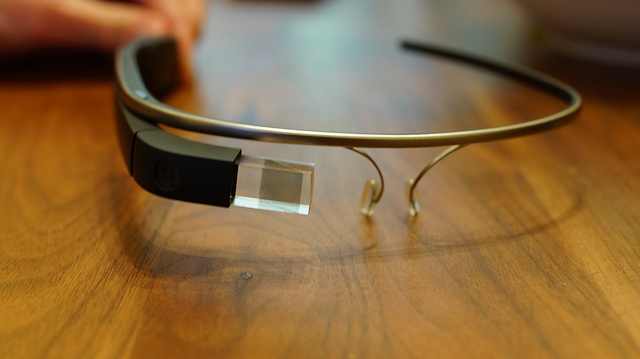Cloud-based enterprise mobility management (EMM) company Fiberlink last week announced that its MaaS360 platform can be accessed by IT administrators using Google Glass (GOOG). MSPmentor wondered whether there was a big demand for Google Glass monitoring so we caught up with Frank Scloendorn, director of the Android ecosystem at Fiberlink and one of the few members of the exclusive group of Google Glass owners today. Here's his perspective.
June 6, 2013

Cloud-based enterprise mobility management (EMM) company Fiberlink last week announced that its MaaS360 platform can be accessed by IT administrators using Google Glass (GOOG). MSPmentor wondered whether there was a big demand for Google Glass monitoring so we caught up with Frank Scloendorn, director of the Android ecosystem at Philadelphia-based Fiberlink and one of the few members of the exclusive group of Google Glass owners today. He provided us with some real-world use cases for Google Glass in business and perspectives on the future of wearable technology, as well as Fiberlink’s future plans for the platform.
Scloendorn told me that Fiberlink has already gotten inquiries from customers about whether the MaaS360 will be able to monitor Google Glass devices, so there certainly is an interest and the device is indeed something that is on the radar of some customers. And for those who think this technology is ‘out there’ Scloendorn pointed out that that iPad you carry around everywhere was considered a silly consumer device just a few years ago. We don’t know that Google Glass or other wearable computing devices won’t see the same kind of success that iPad has in the next three to four years, he said.
So Fiberlink has been experimenting with how its business customers may want to use Google Glass. The first way is to add convenience. By writing to the Google Glass Mirror API, Fiberlink was able to add IT monitoring functionality of its platform to Google Glass, letting Scloendorn work on issues back at the office remotely without using his phone or laptop. He tried this out while he was sitting in the audience at the recent Google I/O developers’ conference in San Francisco. (How did TSA/airport security react to Google Glass when Scloendorn traveled from Philadelphia to SFO? They paid no attention to the device that Scloendorn put in its special case and into the bin for the X-ray machine.)
Currently, applications on Google Glass can only be hosted in the cloud, so they are limited. There’s no way to download apps to the device itself. Google plans to add that functionality soon, however, Scloendorn said, via an SDK. Currently applications that work with Google Glass include Gmail, Evernote and some news apps from publishers CNN and the Wall Street Journal. Oh, and the MaaS360 monitoring interface.
But that’s just the beginning. Fiberlink offered the following potential business use cases:
Utility workers. When these workers are climbing telephone polls or are in situations where there is high voltage, hands-free access to their applications could both increase efficiency and safety.
Hospital workers, including doctors and nurses. Google Glass could potentially be used to read QR codes on medical bracelets to provide healthcare workers with quick access to medical files on their Google Glass heads up display.
The next stage will be when enterprises start getting more Google Glass devices and need to manage them. Google Glass runs on Android, which most EMM and MDM platforms support already. But IT and developers will be looking at how to secure devices like Google Glass. Apple (AAPL) is reportedly also working on wearable tech in the form of a wristwatch.
The price of Google Glass may be another factor. The device debuted in its first limited distribution at $1,500, but when Google releases a retail version next year it’s expected to be priced significantly lower than that.
And, we would be remiss if we didn’t note the mixed reaction that Google Glass may be getting among those who are not quite as enamored of new gadgets and technology. But maybe these people are just jealous. I know I am. Sort of.
About the Author(s)
You May Also Like


